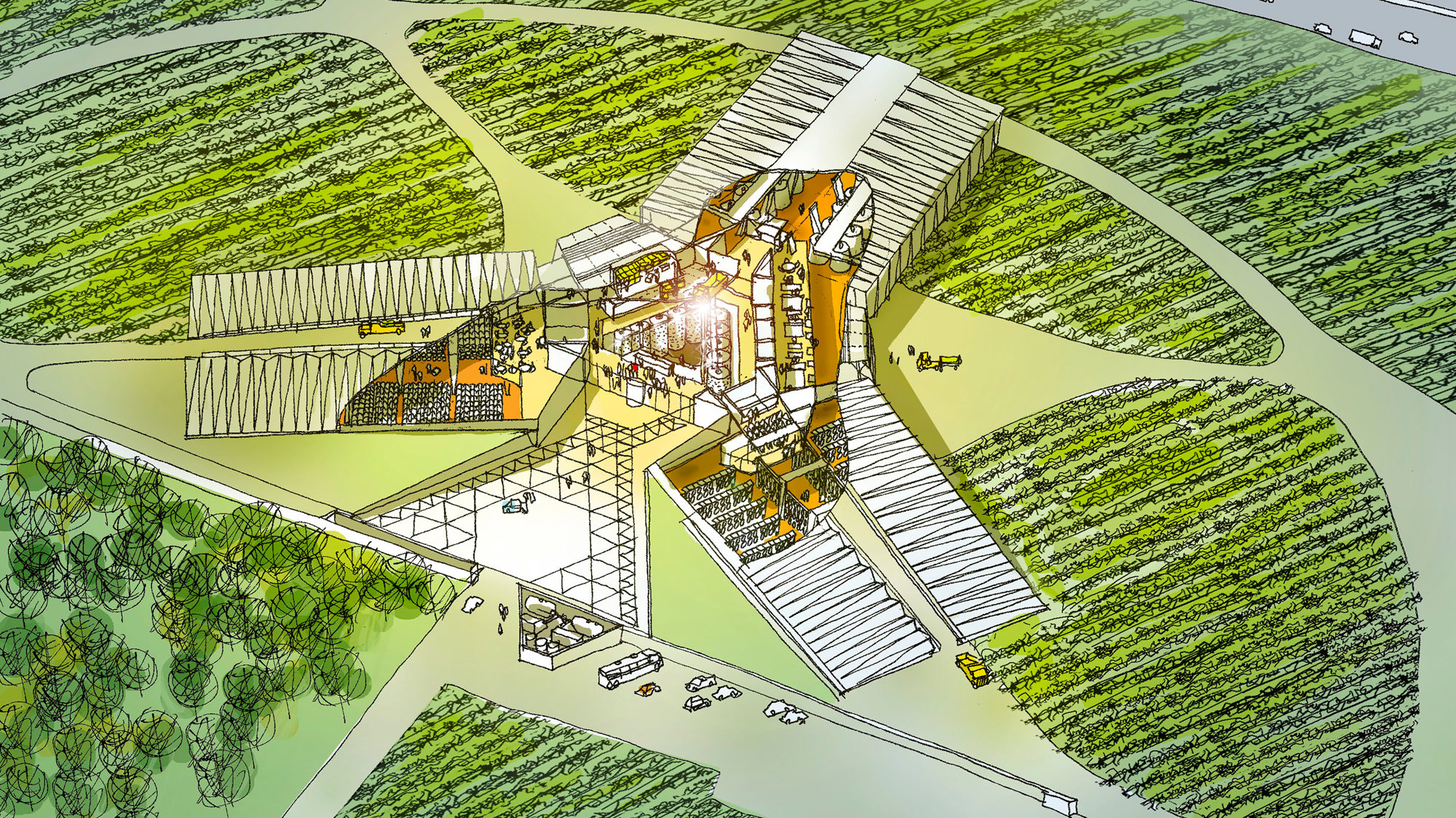Foster + Partners have unveiled designs for a new winery for the Faustino Group, 150km north of Madrid in the Ribera del Duero, one of Spains foremost wine-producing regions. Form follows function to striking effect, with the complex processes rationalised to create the optimum conditions for wine production. The material palette of oak, steel and glass relates to the production of wine, itself. Visible from one of the main arteries in the country that links Madrid to Bilbao; the winery will be a new symbol for the group, establishing their new brand, Bodegas Portia.
Reminiscent of the naturally undulating topography of the site, a road climbs to the roof of the building, enabling the harvested grapes to be poured straight down into the hopper, where the wine production process begins. The buildings unusual trefoil design is the logical result of a rationalisation of the wine making process into its three core functions. Using gravity to aid movement of the wine within the building, the circulation between the functions is seamless - maximising efficiency and minimising damage to the grapes and wine at their various stages of preparation. The different needs for each stage - the fermentation in steel vats, ageing in oak barrels and finally, ageing in bottles - dictate the three distinct volumes of the building which are controlled by an operations hub at the core. The wings which house the barrels and bottle cellar are partly sunken below ground, providing the most favourable conditions for ageing the wine, while the fermentation wing is exposed, allowing carbon dioxide to be released.
Partly buried within the landscape, the visible impact of the building is reduced and the passive environmental benefits are maximised, as the concrete structure uses thermal mass to control the internal atmosphere. The building is clad in tiles of earth-toned Corten steel, which further enhances a sense of harmony with the dramatic landscape. The design also incorporates photovoltaic cells on the roof, thus lessening the environmental impact. A slim line of day-light in the wings of the vast spaces of the winery delineates the ground level, to aid orientation for both visitors and employees. The main visitor facilities are located at the heart of the building, overlooking the operations hub with access to the public areas on glazed mezzanine levels extending to each wing and to the wine tasting in the café and restaurant. Lined with deep-stained old wine barrel slats, they are evocative of the rich tradition of winemaking in the region.
The winery will open in time to process the first harvest of 1.2m kilos of grapes in Spring 2008.









